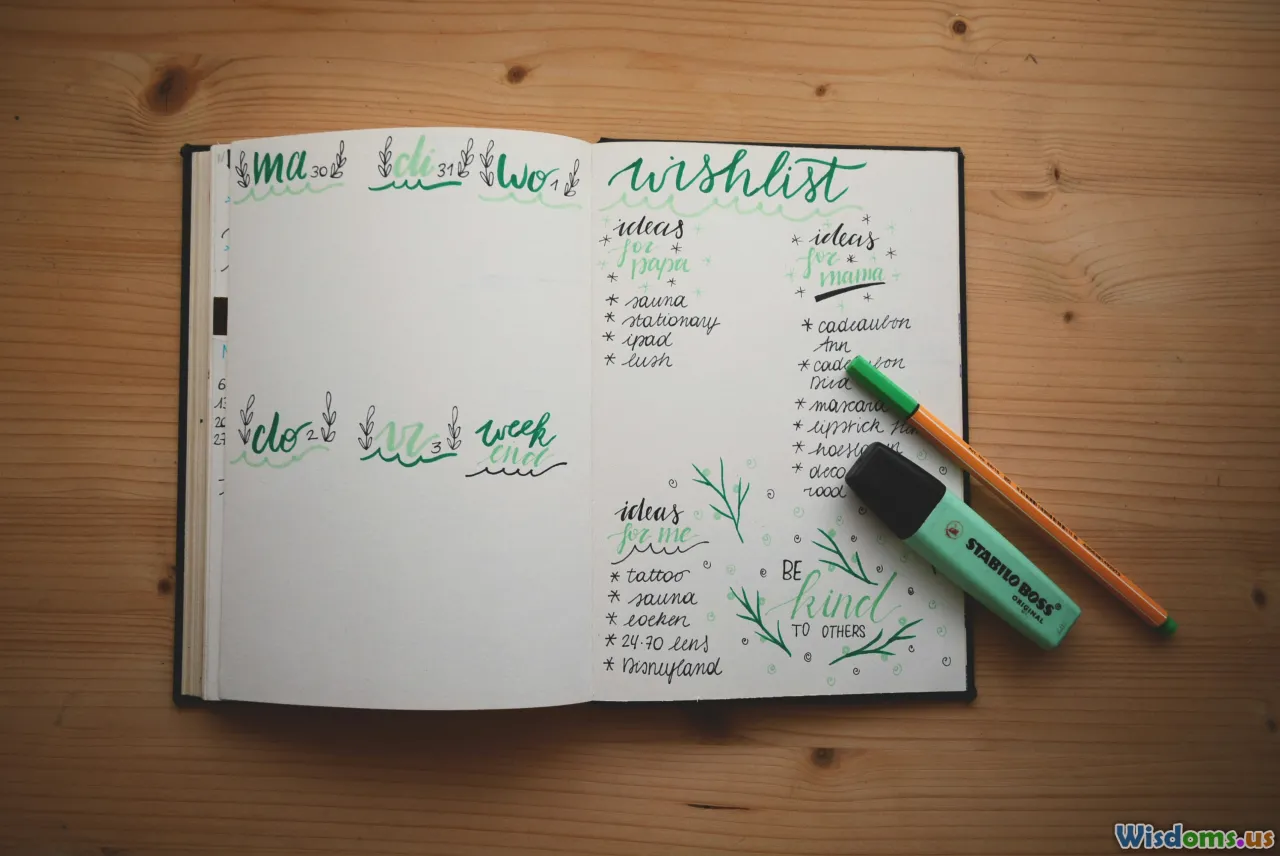
Growth Through Pain The Science Behind Thriving Amid Hardship
29 min read Evidence-based guide to how adversity builds resilience and meaning through neuroplasticity, stress inoculation, and post-traumatic growth, with practical strategies to channel hardship into sustainable well-being. (0 Reviews)
Pain is a terrible teacher—uninvited, uncompromising, and unforgettable. And yet, many of the people we admire most trace their strength, clarity, or purpose back to hardship: the illness that changed their priorities, the failure that refined their craft, the loss that expanded their empathy. Growth through pain isn’t a romance with suffering; it’s a disciplined, evidence-backed process of adaptation. This article explores the science behind thriving amid hardship and translates it into practical steps you can apply—without glorifying trauma or minimizing real distress.
The science of growth after adversity

Researchers Richard Tedeschi and Lawrence Calhoun coined the term “post-traumatic growth” (PTG) in the 1990s to describe positive psychological changes that can occur following profound struggle. While resilience is the ability to bounce back to baseline, PTG is about moving forward to a new baseline—often with deeper appreciation of life, stronger relationships, a clarified sense of purpose, or more personal strength.
Key facts:
- PTG doesn’t happen to everyone, and it’s not guaranteed. Estimates vary widely (roughly 30–70% in various studies) and depend on the type of adversity, cultural context, and support systems.
- PTG isn’t the absence of pain. People can experience anxiety, grief, or intrusive memories and still report growth in meaning, purpose, or relationships.
- Time matters. Early reports of “I’ve grown” can sometimes be a coping story rather than enduring change. Longitudinal studies suggest that stable growth is more likely when people engage in deliberate processing—meaning-making and behavior changes—over months or years.
- Domains of growth typically measured include: appreciation of life, relating to others, personal strength, recognition of new possibilities, and spiritual/existential change.
Comparison to resilience and recovery:
- Recovery: returning to former levels of functioning after a stressor.
- Resilience: withstanding stress with minimal disruption.
- Post-traumatic growth: transformation; developing capacities or perspectives not present before.
A crucial caveat: hardship alone is not developmental. Support, coping skills, and environment determine whether stress becomes toxic or adaptive. The goal is not to seek suffering but to build systems that turn unavoidable pain into fuel for constructive change.
Stress, the brain, and why hardship can catalyze adaptation

Your body isn’t built for perpetual comfort; it’s built for calibration. The stress response is an adaptive, ancient system designed to mobilize resources under threat and then return you to homeostasis.
What happens under stress:
- The HPA axis (hypothalamic-pituitary-adrenal) releases cortisol and catecholamines, preparing you for action.
- The amygdala flags threat, while the prefrontal cortex (PFC) ideally modulates the response—if you’re rested, fed, and not overwhelmed.
- Allostasis, the process of achieving stability through change, adjusts your physiological setpoints to meet demands.
Two key principles support growth:
- Hormesis: Small-to-moderate stressors (exercise, learning challenges) can strengthen systems if followed by recovery. Too much stress without recovery becomes toxic, leading to allostatic load (wear and tear).
- The Yerkes–Dodson law: Performance improves with arousal up to a point, then declines. Productive struggle lives in the middle zone—demanding but tolerable.
Neuroplasticity under adversity:
- Adaptive cycles of effort and recovery can increase brain-derived neurotrophic factor (BDNF), supporting neural growth and synaptic plasticity.
- Practices like cognitive reappraisal and mindfulness can strengthen PFC–amygdala connectivity, improving emotion regulation.
- Vagal tone (measured indirectly via heart rate variability, HRV) correlates with stress resilience. HRV biofeedback has shown reductions in anxiety and improvements in emotional regulation in meta-analyses.
The takeaway: Stress is not the enemy; unbuffered, chronic stress is. Growth begins when you can titrate challenge (load) and recovery (restore) with deliberate skill.
Meaning-making: the engine of post-traumatic growth

Viktor Frankl observed that meaning can transform suffering, not by removing pain, but by reorganizing its role in our lives. Contemporary psychology backs this up: how we interpret adversity powerfully shapes outcomes.
Mechanisms:
- Narrative identity: The stories we tell about ourselves become templates for behavior. Redrafting your story from “this broke me” to “this shaped me” changes goals and habits.
- Cognitive processing: Deliberate reflection helps integrate the experience into your worldview, reducing fragmentation and rumination.
- Social meaning: Sharing stories in supportive contexts reduces shame and fosters connection—key predictors of growth.
Expressive writing, a well-studied tool:
- James Pennebaker and colleagues found that writing about emotional upheaval for 15–20 minutes across several days can improve immune function, reduce doctor visits, and increase well-being months later.
- The trick is depth and coherence: move beyond venting to insight (how did this change my priorities?) and action (what values will guide me now?).
How-to: a meaning-making session (20–30 minutes)
- Set a boundary: Choose a topic that feels important but manageable today. If you feel overwhelmed, scale back.
- Write uncensored: What happened? Why did it matter? How did it change you? Where did you show strength? Where did you learn?
- Extract values: List 2–3 values the experience revealed (e.g., honesty, connection, health).
- Design a behavioral anchor: One concrete habit that enacts each value this week (call a friend, schedule a medical check, protect bedtime).
- Close with compassion: Write a note to your future self acknowledging effort and uncertainty.
If writing is difficult, try audio notes or a “walk and talk” with a trusted friend, focusing on values and next steps rather than rehashing every detail.
Cognitive tools that turn pain into progress

Not all thoughts deserve equal airtime. Cognitive skills help interrupt unhelpful loops and convert raw emotion into wise action.
Core practices:
- Cognitive reappraisal: Train yourself to ask, “What else could this mean?” Example: A failed pitch could signal poor product–market fit, not personal inadequacy; the new meaning shifts you to hypothesis testing rather than self-blame.
- Acceptance and Commitment Therapy (ACT): Allow difficult feelings to be present while you take values-based actions. You don’t need anxiety to disappear before you make the call.
- CBT basics: Identify cognitive distortions (catastrophizing, all-or-nothing thinking). Replace “I always fail” with “I missed this one; here’s the plan to improve.”
- Exposure with safety: For fears that limit life, gradual exposure is powerful. Build a fear ladder: list 10 steps from easiest to hardest, and climb it with support, tracking your distress (SUDS 0–100) as it drops over sessions.
- WOOP (wish, outcome, obstacle, plan): From Gabriele Oettingen’s research, mental contrasting plus implementation intentions improves goal follow-through, especially when obstacles are named.
Scripts to try:
- Reappraisal: “This pain is information. If I decode it, I’ll find a lever.”
- ACT defusion: “I’m noticing the thought ‘I can’t handle this.’ Thanks mind. I will choose my next step anyway.”
- Implementation intention: “If it’s 7 p.m. and I start ruminating, then I will write for 10 minutes and call Sam if it persists.”
Mindset nuance:
- Growth mindset (belief that abilities can develop) helps, but only when paired with strategies and feedback. It’s not a shield against grief or injustice; it’s a stance that effort plus learning can change outcomes.
The power of other people: co-regulation and social scaffolding

People heal people. Social support is one of the strongest predictors of recovery and growth after hardship.
Why it works:
- Co-regulation: Calm nervous systems calm other nervous systems. A steady voice, eye contact, and steady breathing can downshift arousal.
- Oxytocin and safety: Supportive touch and trust-building interactions can buffer stress reactivity and increase prosocial behavior.
- Identity reconfiguration: Being seen as competent and worthy by others helps you see yourself that way again.
Build your resilience board:
- Map roles: one pragmatic problem-solver, one empathetic listener, one accountability partner, one expert (therapist, coach, legal/medical advisor), and one cheerleader.
- Set communication cadences: weekly check-ins, crisis protocol (“If I send a ‘red’ text, please call me”), and boundaries.
- Practice the ask: “I’m facing [challenge]. I don’t need fixing; I need [listening/brainstorming/company]. Are you available for 20 minutes today or tomorrow?”
If relationships are strained, adopt low-stakes connection habits: join a hobby group, volunteer, or attend peer-support meetings. Weak ties often provide unexpected support and opportunity during transitions.
Body-based levers: taming physiology to train psychology

Your biology sets the stage for every mental skill. The most advanced cognitive strategy struggles if your sleep is wrecked and your blood sugar swings wildly.
High-impact levers:
- Sleep: One night of sleep loss can increase amygdala reactivity by 60% and reduce prefrontal control. Protect 7–9 hours. Use a wind-down routine, consistent wake time, and dim lighting in the evening. If early insomnia hits, try a “brain dump” list and a 15-minute wind-down walk.
- Exercise: Aerobic activity elevates BDNF and can enlarge hippocampal volume over time (older adults saw ~2% growth in a year-long walking study). Resistance training builds confidence and metabolic resilience. Rule of thumb: 150 minutes/week moderate cardio, 2–3 strength sessions.
- Breathwork: Slow nasal breathing (4–6 breaths per minute) increases HRV. Try the physiological sigh: two short inhales, one long exhale, repeat 3–5 times to reduce acute stress.
- Nutrition: Emphasize plants, lean proteins, and omega-3 fats; stabilize blood sugar with protein-rich breakfasts. Hydrate. Limit alcohol (it erodes sleep and mood regulation).
- Sunlight and nature: Morning light anchors circadian rhythms; even 10–15 minutes outdoors improves alertness and mood. Nature exposure is linked with lower rumination and stress markers.
Optional hormetic tools (with care):
- Cold exposure and heat (sauna) can improve mood and stress tolerance for some, but they’re not required and can be risky for certain medical conditions. Start conservatively, prioritize safety, and never mix with breath-holds in water.
From acute pain to progress: a 30/60/90-day plan

Adversity scrambles routines. A simple, phased plan prevents drift and keeps adaptation deliberate.
Days 0–30: Stabilize and create safety
- Triage basics: sleep, food, hydration, movement, sunlight, meds if prescribed. Aim for “good enough,” not perfect.
- Contain the problem: Make a list of urgent tasks and “stop-the-bleed” actions (cancel subscriptions, contact HR, schedule medical follow-up, secure finances).
- Install micro-habits:
- 10-minute walk after waking.
- 3-minute breathwork before hard tasks.
- 10-minute expressive writing, 3x/week.
- Social scaffolding: Identify your resilience board and send the first outreach.
- Avoid major irreversible decisions if possible while emotions are raw.
Days 31–60: Process and experiment
- Meaning-making: One deeper writing session weekly focused on values clarified by the hardship.
- Skill loops: Choose one cognitive tool to practice daily (reappraisal, ACT actions, exposure steps).
- Recovery capacity: Add one strength session and one longer aerobic session weekly.
- Opportunity scanning: List 3–5 realistic “new possibilities” (skills to learn, roles to try, relationships to repair). Pick one small experiment.
Days 61–90: Integrate and build
- Identity projects: Design a project that enacts your new values (mentoring others, launching a small initiative, formal training).
- Feedback and refinement: Ask two trusted people where they see changes in you—what’s stronger, what’s still fragile.
- Maintenance plan: Decide which habits are non-negotiable for the next quarter. Calendar them. Celebrate small wins to reinforce identity shift.
Red flags and when to seek professional help:
- Persistent nightmares, flashbacks, avoidance, hypervigilance beyond one month may indicate PTSD.
- Suicidal thoughts, self-harm urges, or substance use escalation require immediate professional support.
- If daily functioning (work, caregiving, self-care) collapses for more than two weeks, reach out to a clinician.
Therapies with strong evidence for trauma and anxiety include trauma-focused CBT, EMDR, prolonged exposure, and ACT. Medication can be valuable; discuss with a qualified provider.
Measuring growth: build a personal dashboard
What we track, we tend to improve—if we track wisely. Measure both wellbeing and capability.
Psychological indicators:
- PTGI-inspired reflection: Monthly, rate 1–10 on appreciation of life, relationships, new possibilities, personal strength, purpose/spirituality. Write one example for each.
- Resilience scale (e.g., CD-RISC): Repeat quarterly to watch trends, not obsess over single scores.
- Rumination minutes: Estimate time spent stuck vs. problem-solving. Aim to shrink rumination and increase intentional reflection.
Physiological indicators:
- Sleep regularity: Track wake time consistency and total sleep.
- HRV (if wearable available): Look at weekly averages; aim for stability or gradual improvement, not daily perfection.
- Activity minutes: Minutes of moderate-to-vigorous activity per week.
Process indicators:
- Value enactments: Number of actions weekly that express your top 2–3 values.
- Exposure ladder steps: Sessions completed and SUDS reduction.
- Social touches: Meaningful conversations per week (quality over quantity).
Build a simple weekly review:
- What energized me? What drained me?
- What pain taught me this week (one sentence)?
- One habit to keep, one to cut, one to try.
Case studies: how growth shows up in real life

Case 1: The founder after a failed startup
- Situation: Maya’s startup shut down after a botched fundraising round. She felt shame and insomnia ruled her nights.
- Actions: She started a 30-minute sunset walk and 10-minute breathwork. She wrote about what mattered most in her work—craft, autonomy, ethical impact. She joined a small founders’ circle and practiced reappraisal: the failure was a data point on pricing and positioning, not a verdict on her worth.
- Outcomes (6 months): Sleep normalized. She launched a boutique consultancy, served three mission-aligned clients, and mentored younger founders. She reported increased appreciation of supportive relationships and a clearer sense of strength under fire.
Case 2: The athlete post-injury
- Situation: Raul tore his ACL. His first month was pain, isolation, and fear of losing identity as a competitor.
- Actions: His plan included physical therapy, HRV-guided training, and a fear ladder for returning to cutting movements. He practiced ACT: showing up for rehab sessions even when motivation dipped, staying anchored to values of discipline and teamwork. Socially, he attended practices and supported teammates to maintain belonging.
- Outcomes (9 months): He returned to play with more prehab routines, served as a peer mentor for injured athletes, and started a sports science course. Growth showed up in broader identity and stronger coping skills.
Case 3: The survivor after a medical scare
- Situation: Lena’s cancer treatment was successful, but she felt an empty, anxious aftermath.
- Actions: Expressive writing revealed a core value: presence with family. She cut two low-value commitments, added a family dinner ritual, and began a gentle yoga practice. She joined a survivorship group and explored EMDR to reduce medical-triggered anxiety.
- Outcomes (1 year): Less fear during follow-ups, deeper relationships, and an advocacy project to improve patient onboarding at her clinic—new possibilities shaped by the worst year of her life.
Work and leadership: building teams that thrive through strain

Organizations can either multiply stress or transform it into capability.
What high-performing, humane teams do:
- Psychological safety: Members feel safe to speak up without ridicule. Amy Edmondson’s research links this to learning and performance—especially under pressure.
- Calibrated challenge: Stretch goals with realistic resources and recovery. Sprint cycles followed by retrospectives prevent chronic crunch.
- Pre-mortems and red-teaming: Anticipate failures before they happen. Normalize that being wrong is part of being rigorous.
- After-action reviews (AARs): Structured reflection on what happened, why, and how to improve next time. Focus on process, not blame.
- Workload recovery: Prohibit back-to-back high-stakes projects without decompression. Protect sleep by respecting time zones and setting sane communication norms.
Manager habits:
- Hold 1:1s that include workload, wellbeing, and learning. Ask, “What’s one obstacle I can help remove?”
- Model boundaries and micro-recoveries: Short walks, meeting breaks, and delayed email sends at night.
- Storytelling for meaning: Share narratives of past setbacks and how the team grew, framing hardship as a shared training ground, not an individual failure.
Teaching resilience without glorifying suffering

Parents, educators, and mentors can cultivate “desirable difficulties”—challenges that foster growth without inflicting harm.
Principles:
- Scaffolded challenge: Match task difficulty to skill, then gradually raise the bar (Zone of Proximal Development).
- Predictable structure: Routines reduce cognitive load and free energy for adaptive learning.
- Error-friendly feedback: Normalize mistakes, emphasize iteration, and teach specific revision strategies.
- Autonomy support: Offer choices and rationales; avoid controlling language. Autonomy fuels intrinsic motivation.
Practices:
- Failure budgets: Pre-set safe experimentation zones (e.g., one low-stakes project per quarter where risk-taking is encouraged).
- Reflection prompts: “What surprised you? What will you try differently next time?”
- Coping toolkits: Teach breathwork, reframing, and help-seeking as standard skills, not last-resort fixes.
- Micro-adventures: Age-appropriate, supervised challenges—navigating a route, leading a small project, presenting a brief—to build agency and competence.
The message to avoid: “Pain makes you stronger.” The message to send: “With support and strategy, you can turn challenges into capabilities.”
Myths, pitfalls, and ethical guardrails

Common myths:
- “What doesn’t kill you makes you stronger.” Sometimes, it leaves scars and vulnerabilities. Strength is possible, not inevitable.
- “Just think positive.” Toxic positivity invalidates real pain and blocks problem-solving. Balanced optimism sees reality clearly and chooses constructive action.
- “Time heals all wounds.” Time plus processing, support, and action do the healing. Time alone can entrench avoidance.
Pitfalls to avoid:
- Overexposure: Flooding yourself with triggers can retraumatize. Use gradual exposure with safety and support.
- Isolation: Shame thrives in secrecy. Choose at least one safe person or group to share the load.
- All-or-nothing routines: Perfect plans fail fast. Favor minimum viable habits that survive bad days.
- Spiritual bypassing: Using beliefs to sidestep grief (“It’s all for a reason”) can delay integration. Honor both meaning and mourning.
Ethical guardrails:
- Do no harm. If an intervention consistently increases distress without adaptation, change course.
- Consent and readiness. Don’t push others to “grow” on your timeline.
- Context matters. Structural factors (poverty, discrimination, unsafe work) shape what’s possible; address systems where you can.
A compact toolkit you can start today

If you have 5 minutes:
- Physiological sigh: 3–5 cycles.
- Write a single sentence: “Today, pain is teaching me ____; I will respond by ____.”
- Text one person: “Hard day. Could use a quick check-in if you’ve got 10 minutes.”
If you have 15 minutes:
- Expressive writing: What happened, what it meant, one value, one action.
- Slow breathing: 4–6 breaths/minute while walking outside.
- Micro-strength set: Squats, push-ups against a counter, rows with a band—2 sets each.
If you have 60 minutes:
- Workout: 30 minutes aerobic + 20 minutes strength + 10 minutes mobility.
- Deep processing: Review your week, adjust your plan, and schedule one values-based action.
- Connection: Call a friend and share one truth and one ask.
A weekly rhythm:
- Mon: Plan the week around your top two values.
- Wed: Midweek check-in and breathwork.
- Fri: After-action review; celebrate one small win.
- Sun: Long walk, light planning, and early night.
Frequently asked questions, answered with nuance

-
How do I know if I’m growing or avoiding? Growth feels effortful but coherent: actions align with values and expand capability. Avoidance provides short-term relief with long-term narrowing of life (more triggers, fewer activities).
-
Can I grow while still in pain? Yes. Pain and growth can coexist. The aim is not to eliminate all distress but to use it as data for wiser action and boundaries.
-
Is it ever too late to start? No. Neuroplasticity and learning remain available throughout life, especially when you combine cognitive, social, and behavioral practices.
-
Do I need therapy? Not always, but if symptoms impair your functioning or feel unmanageable, professional support accelerates recovery and reduces risk.
-
Isn’t focusing on growth insensitive to severe trauma? Growth should never be demanded or used to minimize harm. It is an invitation and a possibility, not an expectation.
Putting it all together: a humane path through hardship

Growth through pain is not a slogan; it’s a sequence: regulate, reflect, reframe, and re-engage. Regulate your body so your brain can think. Reflect to extract meaning. Reframe your story with accuracy and agency. Re-engage the world with values-aligned action, tiny at first, then bolder. Surround yourself with people who steady your breath and amplify your better instincts. Measure what matters and keep your plans small enough to do on a bad day.
You don’t have to like the pain to learn from it. You don’t have to be unbreakable to become strong. When hardship arrives—as it eventually does—let it find you ready with tools, allies, and a willingness to turn toward the work. That willingness, practiced over time, is how adversity becomes not a detour from your life, but the training that equips you to live it more fully.
Rate the Post
User Reviews
Popular Posts














